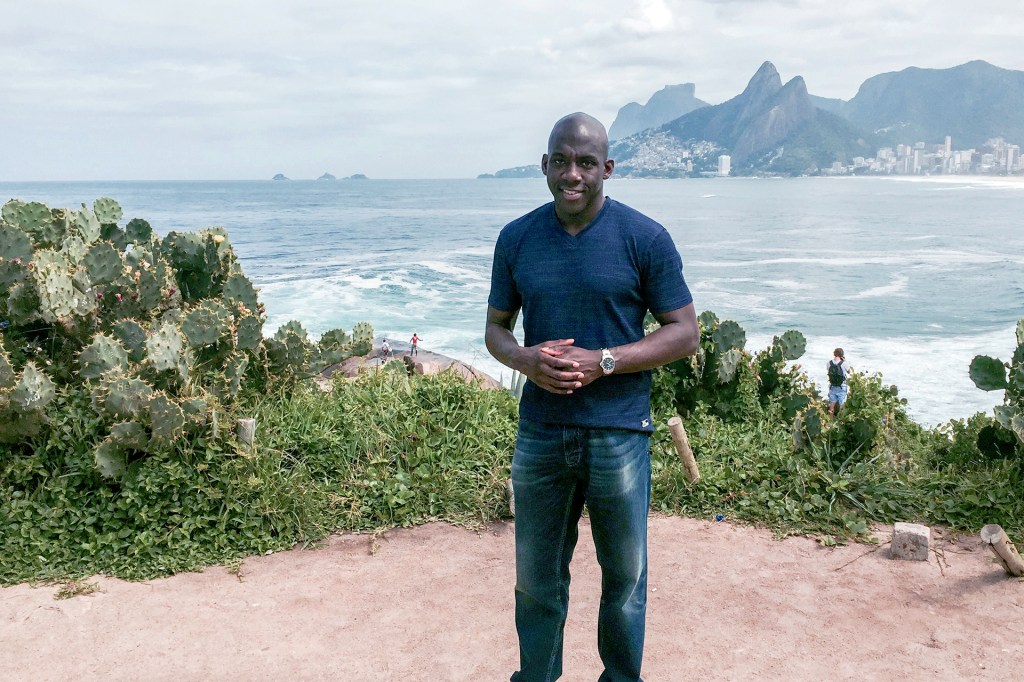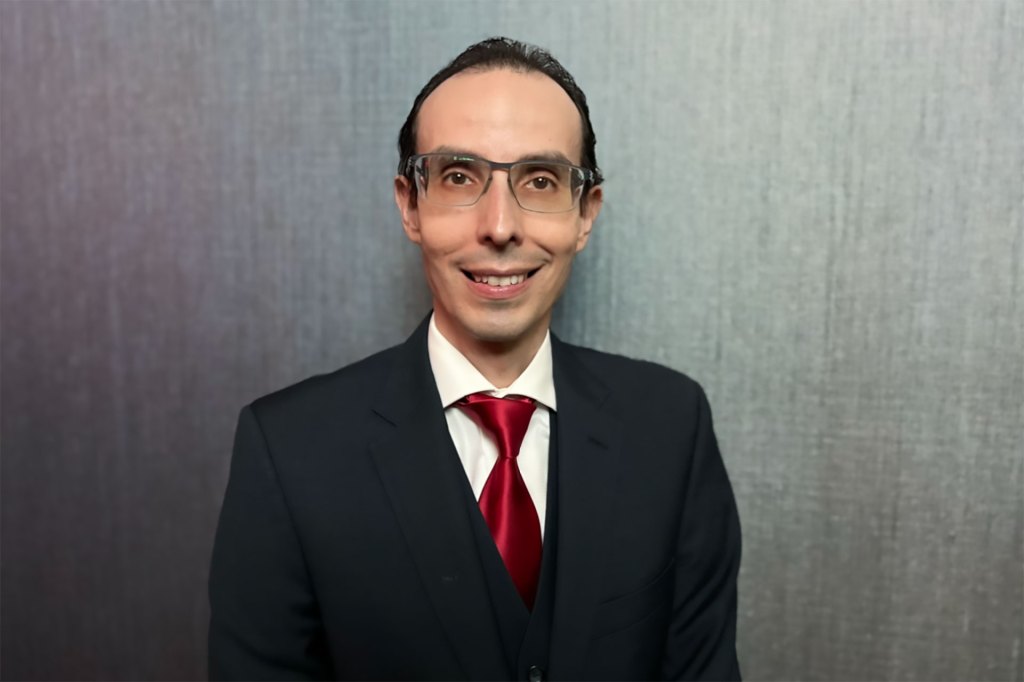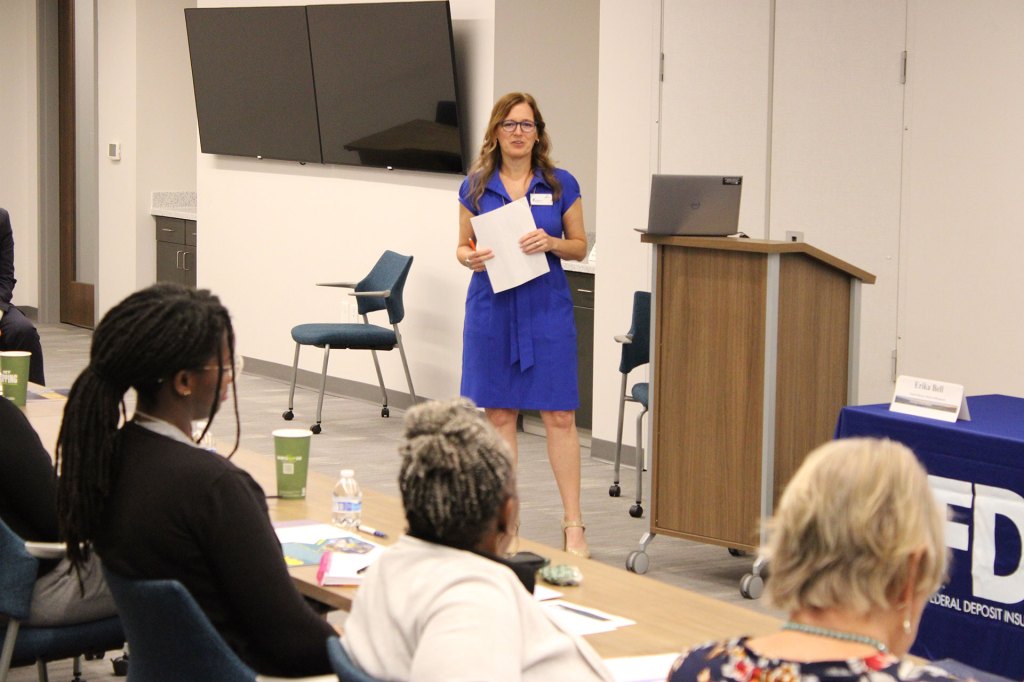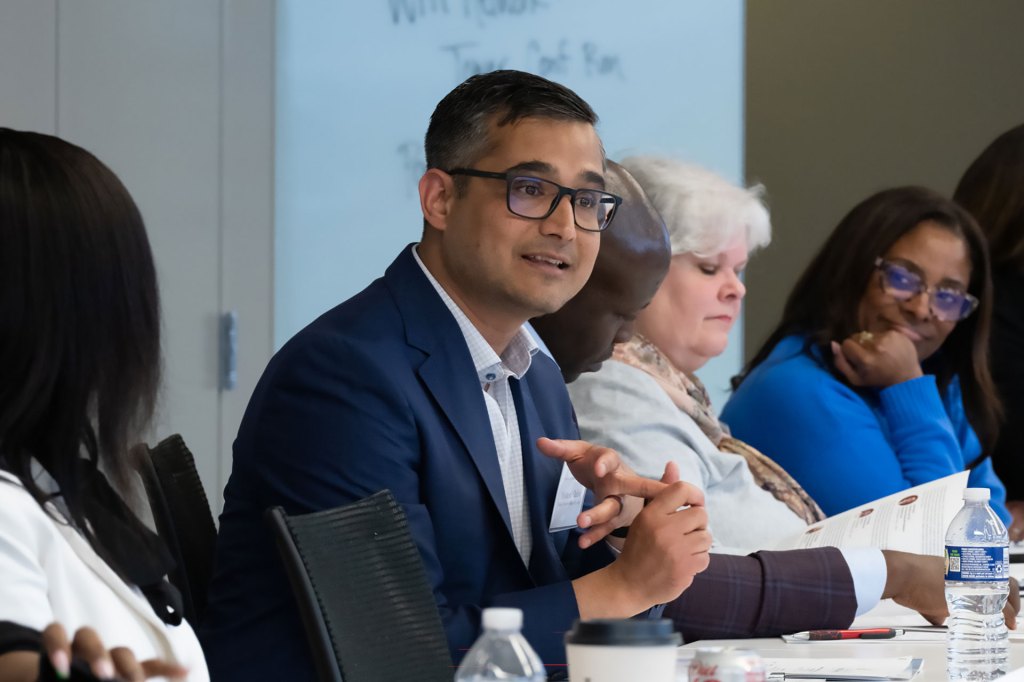Tony Davis, Director of Community Outreach & Health, New York Fed
Tony Davis, director of community outreach and health at the New York Fed, stays on his toes with work that encompasses a large territory. His work represents all of New York state, the twelve northernmost counties in New Jersey, Fairfield County, Connecticut, and the territories of Puerto Rico and US Virgin Islands. “I’m always learning. The diversity of our District coupled with the diversity of the topics keeps the work fresh.”
Tony carefully considers these communities’ differences with his team when developing strategies to improve the District’s social determinants of health.
“Social determinants of health are the non-medical factors that influence health outcomes,” Tony explained. “Things like access to healthy food and clean parks. Improving people’s environments improves health outcomes.”
An unlimited amount of need
Tony’s 17-year career at the Fed has led him to a focus of helping build healthy communities. But it didn’t begin that way.
After finishing his undergraduate in sociology, Tony went on to complete his first master’s degree in international affairs. His graduate studies focused on African affairs, and he began studying Swahili. He then pursued a second master’s degree in urban planning, with a focus on international planning in housing. While earning this degree, Tony interned for Enterprise Community Partners, a community development financial institution (CDFI). That’s when his focus shifted back home.
“Over the course of the summer internship, I realized there’s so much work to be done in the United States. And a place like New York City gives you an opportunity to do community development work in a multinational city.” Tony added that deciding where to focus your work can be “a difficult choice for community development professionals. We have limited staff but there’s an unlimited amount of need.”
After graduation, Tony stayed with Enterprise doing capacity building programming with faith-based community development corporations in Rochester, NY. He would ensure that the community-based organizations partnering with the CDFI were strong enough to help revitalize the neighborhoods they served. Tony brought this capacity building experience to the New York Fed in 2006.
When he first joined the Fed, Tony supported initiatives helping to revitalize cities and rural communities in upstate New York. In this role, he monitored low- and moderate-income (LMI) communities through partnerships with local nonprofits, city governments, universities, and banks.
“In Buffalo and Rochester, for instance, there was a lot of attention devoted to trying to figure out how to handle the vacant property issue,” Tony said. “Our team brought in experts from different parts of the country to share best practices with local leaders.”
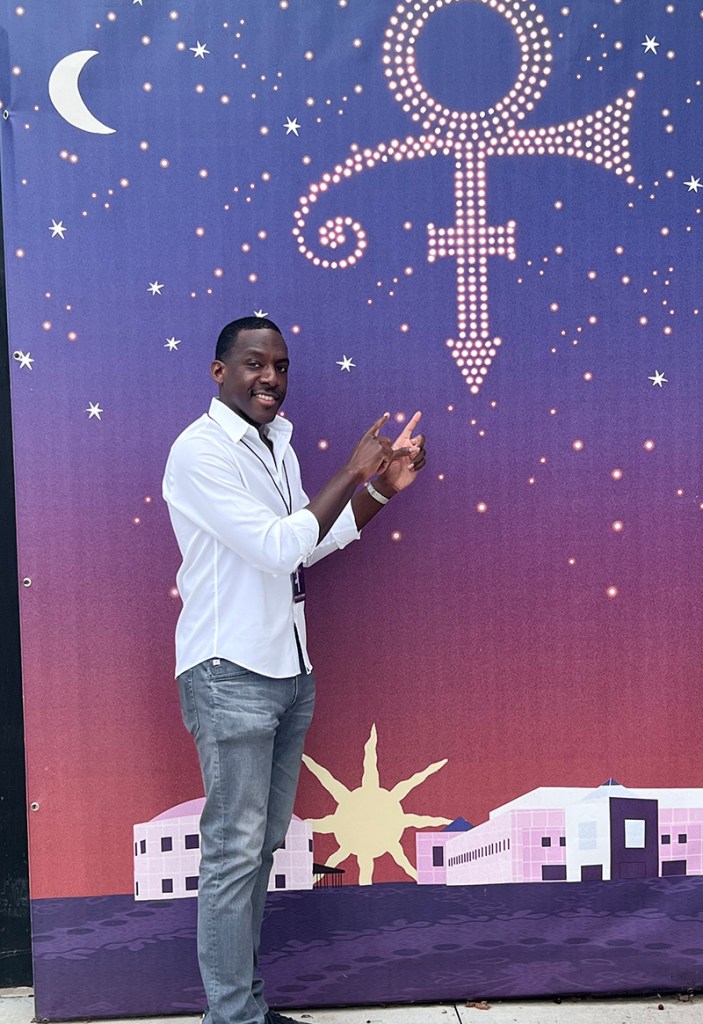
Tony touring Paisley Park, home and studio of Prince

“I’m always learning. The diversity of our District at the New York Fed, coupled with the diversity of the topics, keeps the work fresh.”
Making the most impact
Having a flexible mindset serves Tony well at the Fed. He explores issues related to workforce development, small business access to capital, and even place-based strategies in Puerto Rico. He has also led regional community visits for New York Fed President John Williams.
In 2020, the New York Fed underwent a nearly yearlong strategic planning process. They decided to focus on three core areas that would be the most impactful to its District:
- Climate adaptation and resiliency
- Household financial well-being
- Health equity
“Health equity was brought to the forefront because we were in the midst of the COVID-19 pandemic. It really drove home the point of how health impacts the economy. It just exacerbated inequalities that were already in existence in society,” Tony explained. “We saw people in LMI communities being disproportionally impacted in terms of severe sickness and deaths.”
Tony and his colleagues believe that healthy communities are central to a strong workforce and an economy that works for all segments of society. As you can imagine, it takes a lot to help improve the social determinants of health. The New York Fed’s team connects the dots between new ideas. They form partnerships. Additionally, they identify sources of capital to create more opportunities for LMI communities.
New Initiative Focuses on the Social Determinants of Health highlights factors that contributed to the New York Fed’s decisions to take a deep dive into health.
The team uses data analysis and experts to share best practices and information with key stakeholders on topics that span food insecurity, maternal and child health, and more. The team also conducts research around how hospital systems and health insurers invest in communities.
Why should the Fed care about health?
While community development practitioners have addressed social determinants of health for years, they often use different terminology. “When I first heard the term ‘social determinants of health’ a decade or so ago, I didn’t fully understand the community development application of it. Roughly 80% of our health comes from social determinants,” Tony said. “It’s now clear to me how important it is for the community development sector to work closely with the health sector to invest more in poor neighborhoods to increase economic productivity for all segments of society.”
When asked why the Fed should care about health, Tony quoted President Williams, “We can’t have a healthy economy without a healthy workforce.”






